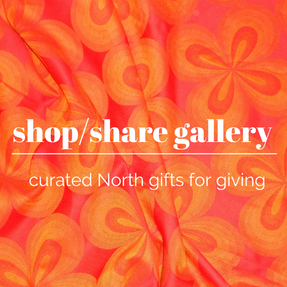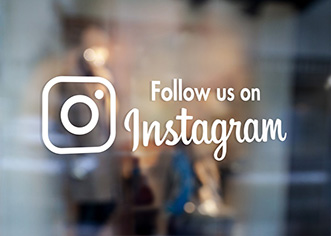COVID-19 has turned our lives upside-down.
A big-picture view of the pandemic and its many effects on us and our communities.
Six weeks after the opening of the St. Paul location, Minneapolis City Council member Andrea Jenkins was headlining an International Women’s Day event at the space. That’s when Steinman looked at her phone and saw a news alert: Minnesota had announced its first case of COVID-19. “Oh, shit,” she thought.

PHOTO BY BETHANY BIRNIE
We’re always living through history, of course, but rarely are we so aware of it. We assume things will more or less carry on tomorrow as they did today. But now the world is abruptly, completely different, and we’re desperately looking for clues about what’s coming next.
Researchers who study how humans perceive the passage of time have found that novelty tends to slow down our experience of it. Monotony, on the other hand, makes it feel as if time has passed quickly, as the brain hasn’t laid down new memories. This is why we experience a car crash in slow motion, but incarcerated people report decades slipping by in a flash.
For many of us here in Minnesota, March felt something like a slow-motion car crash, with each day bringing revelations about the scale of the threat posed by the novel coronavirus and how we would need to respond to it. In contrast, April and most of May slipped by quickly, in a haze of sameness under the governor’s stay-at-home order. The former bonanza of sights and activities packed into each day reduced to steady repetition—the same familiar faces of those we live with, within the same familiar walls.
Even the daily headlines took on a Groundhog Day quality, emphasizing the state’s commitment to ramping up testing while laying out the delays that kept pushing the plan’s execution back. Clarity seemed to recede farther into the distance day by day, even as data accumulated.
And then suddenly we hit warp speed again, as the killing of George Floyd at the hands of Minneapolis Police officer Derek Chauvin in south Minneapolis on May 25 set off a local response that quickly rippled across the nation. What’s to come remains anyone’s guess. But if one thing is clear, it’s that we cannot—and should not—go back to the old normal.
It may be near-impossible to actually remember the path the state was on before the pandemic swept it, and more than 1,300 Minnesotans’ lives, away.
So let’s take this opportunity to zoom out. Our spring lockdown brought acts of everyday heroism from frontline workers and volunteers, as well as vocal protests around the duration of the stay-at-home order. And now, there’s a sense that we can expect significant lifestyle changes going forward in our post-pandemic reality, for better or for worse.

SLADE KEMMET MEDIA
Where We Were
In the early months of 2020, amidst faint but growing warnings of a new respiratory disease emerging in Wuhan, China, the presidential Democratic primary dominated the headlines in the U.S. In the two days leading up to Minnesota’s primary election on March 3, Pete Buttigieg and Amy Klobuchar both dropped out of the race, and Joe Biden carried the state.
In the Twin Cities, Minneapolis Public Schools unveiled a controversial new plan in January to reduce the number of district magnet schools and redraw community school boundaries. The response from residents was mixed, and the debate seemed certain to rage right up until the vote. (In mid-May, it passed during a virtual meeting.)
Also in January, the biggest potential disruption facing the upcoming Minnesota State Fair—which had packed in a record 2,126,551 guests in 2019—was the addition of metal detectors at the gates. First Avenue rolled out details of 50th-anniversary festivities for summer, and the Guthrie Theater had casts and artistic teams in place for their summer productions of Cabaret and the Pulitzer Prize-winning play Sweat by Lynn Nottage. The Twins were optimistically riding the momentum of last season’s division title into spring training. Dozens of new restaurants, eateries, breweries, and distilleries were in the works across the state, with plans to open in the coming months. The stock market was continuing its record-setting upward climb.
Our calendars were dense with leisure, sports, arts, dining, and travel. All of it would offer much-needed distraction from the usual demands of work, and from the biggest story of the year, which was all but certain to be the hotly contested 2020 presidential election.
When the Wave Hit
Two weeks after the Minnesota Department of Health confirmed the state’s first case of COVID-19, the total cases were 115, and the state saw its first death from the virus. From there, things started moving quickly. Gov. Walz’s stay-at-home order went into effect on March 27, but by then many of us were already staying close to home, venturing out only for groceries, caretaking, or essential work.

yard signs to honor frontline workers
PHOTO BY TONYA SUTFIN
Between mid-March and early June, more than 750,000 Minnesotans filed for unemployment—more than triple the total claims filed in all of 2019. The economic impact of the pandemic fell disproportionately on people of color: Thirty-two percent of Black people in the state’s labor force applied for unemployment, compared with 25% of Hispanic workers, 22% of Asian workers, and 18% of white people.
Seemingly no industry was spared, from hospitality to manufacturing to media. The Minnesota Council of Nonprofits reported that its members lost an estimated $1 billion in revenue in April. Outstate and Twin Cities-area weeklies folded after steep and sudden drop-offs in advertising revenue. There were pay cuts at the Star Tribune, and both Minnesota Public Radio and the St. Paul Pioneer Press offered staff buyouts.
Poultry and pork processing plants throughout the state faced closures and uncertain futures. The Austin-based Hormel Foods halted production at two of its factories in outstate Minnesota for at least two weeks. A JBS pork-processing plant in Worthington closed indefinitely after hundreds of workers tested positive for the virus. At a Pilgrim’s Pride chicken plant in Cold Spring, workers called for the facility to be closed for a two-week deep cleaning after nearly 200 cases were confirmed among the plant’s employees.
Closures have gutted dining and hospitality. For hotels that remained open, occupancy has dipped precipitously. Hospitality Minnesota—an association of 2,000 hotels, restaurants, resorts, and craft brewers throughout the state—said that, without government assistance, half of its members could close by this summer. Among the Twin Cities’ losses by the end of May: the award-winning Bachelor Farmer restaurant in the North Loop, Chicago Avenue’s El Burrito Mercado, Muddy Waters on Lyndale Avenue, and Pazzaluna in St. Paul.
How We Responded
In the midst of the economic gut punch, Minnesotans, businesses, and institutions are digging deep to keep themselves and their neighbors safe in bold and creative ways. There is bravery and compassion on the front lines from first responders, and from those working in essential healthcare, retail, delivery, janitorial, and public safety roles.
A shortage in personal protective equipment (PPE) and other supplies for frontline workers has led to efforts large and small. Costume shops at the Guthrie Theater and the Minnesota Opera have sewn masks to donate to healthcare organizations. And local designers, such as Sarah Butala of Strey Designs and Maggie Thompson of Makwa Studio, pivoted to creating and selling masks, with proceeds from sales helping to enable mask donations to health clinics and vulnerable community members. Minnesota distilleries, including Tattersall Distilling and Du Nord Craft Spirits, have started producing alcohol-based hand sanitizer instead of spirits.
Meanwhile, Minnesota’s status as a national leader in health innovations and care propelled us to the forefront in the battle against COVID-19. 3M ramped up production of N95 respirator masks and ventilators, helping to meet an urgent national need for medical-grade protection for healthcare professionals. Medtronic innovated new ventilation technology that allows caregivers to monitor and adjust ventilators remotely, limiting the possibility of virus transmission between patients and healthcare providers. And Mayo Clinic took a leading role in working toward vaccine development, gene therapies, and other potential treatments for the disease.
Scores of Mayo Clinic doctors offered telemedicine assistance to intensive care unit providers at NewYork-Presbyterian Lawrence Hospital as it was inundated with COVID-19 patients. Mayo specialists used secure audio-video connections—plus access to patient records, lab tests, bedside monitors, and X-ray images—to bring their expertise in critical care medicine to one of the country’s hardest-hit hotspots. The University of Minnesota and Mayo Clinic also came together to ramp up what Gov. Walz dubbed Minnesota’s “moonshot” testing capacity, with a goal of performing 20,000 tests throughout the state each day. (The state regularly hit 10,000 daily tests by early June.)
Second Harvest Heartland, the region’s largest food bank, launched Minnesota Central Kitchen and teamed up with Twin Cities restaurants and caterers to distribute 10,000 meals daily to local hunger-relief programs. And organizations such as St. Stephen’s, the Cultural Wellness Center, and Catholic Charities of St. Paul and Minneapolis redoubled efforts to keep Minnesota’s most vulnerable residents fed, clothed, sheltered, and well.
Groups are bonding together to protect the arts and hospitality industries. Dayna Frank, CEO of Minneapolis’ First Avenue nightclub, heads the board of the new National Independent Venue Association (NIVA), which is fighting to secure emergency government aid for its more than 1,000 U.S. music venue members. Meanwhile, the Twin Cities Restaurant Coalition has assembled our best chefs to brainstorm ideas for long-term sustainability for restaurants. Springboard for the Arts, a community development organization based in St. Paul, has emerged as a national leader in raising and distributing emergency funds for artists who lost work due to the pandemic, and for the Black Lives Matter movement after George Floyd’s killing in late May.
Small businesses pivoted to delivery, curbside, or virtual services. At the Coven, Steinman and her co-founders kept their community connected when their two physical locations temporarily closed in March. Within 24 hours of launching a pay-what-you-can digital membership, 50 new members had signed up. That number eventually grew to more than 500, reflecting the hunger people are feeling for a sense of community in the midst of physical distancing. In the wake of Floyd’s death, the Coven’s digital offerings held space for the community to process grief and trauma, and its physical locations collected supplies for affected neighborhoods.
The New Normal
There’s no way to know what the new normal will look like, or when it will arrive. By all indications, a long, slow process of reorienting to new economic and social realities is ahead. Seeing and wearing masks is becoming common. For many, telework is here to stay. Easy, frequent hugs and handshakes may be a thing of the past. Social distancing guidelines seem likely to linger well into next year, or beyond. Our neighborhoods need to heal.

COURTESY MAKWA STUDIO/MAGGIE THOMPSON
The Minnesota Historical Society is collecting and preserving Minnesotans’ personal experiences of the COVID-19 crisis. The community-sourced digital collection of stories and images, called History Is Now, might show future generations how the pandemic affected our lives. (To read others’ stories or submit one of your own, visit mnhs.org/blog/historyisnow.)
Businesses and organizations are recalibrating. Major League Baseball is weighing options for a shortened season with empty stadiums. Colleges and primary schools are making decisions about when in-person classes might resume. For now, large summer gatherings, like Fourth of July parades, are being canceled, and the Minnesota State Fair has been called off for the first time since the polio epidemic of 1946. We are processing the protests that began in late May. Will we all vote through the mail in November?
Many want a fresh start. Progressives hope to rebuild so the pandemic’s disproportionate economic and medical impact on communities of color doesn’t exacerbate inequality. They’re rallying around policies mandating paid sick leave, a livable minimum wage, and greater housing and food security for low-income residents. Environmentalists hope a glimpse of clearer air, while commuting was on pause, inspires bold initiatives.
Like some other Minnesotans, Steinman and her husband are looking at each other during these days of quarantine and thinking, We haven’t been home this much in years. “My yard is amazing,” she notes. “I’ve got a great garden going, and the house has never been cleaner. I get to see my kids all day. We’ve got nothing but time; we’re not rushing to anything. I want to take elements of this with us into whatever this new world is.”
At the same time, she and her co-founders are busy planning the new safety measures that will allow the Coven’s two locations to reopen, including new design elements and protocols.
“We get to be a leader in what workspace design looks like,” she says. “That’s part of the craziness of being an entrepreneur: You can be equal parts dreading what’s to come and excited about what you can help shape.”
By Mo Perry







